In the past, you may have noticed that when your bartender poured you a pint of beer, it didn’t quite taste like the bottles you had sitting in your fridge at home. The freshness was different, and perhaps also the bitterness of your beloved IPA. Maybe you noticed a quality change or you wondered how the flavor could have varied so much. Why is this?
There are countless beer lovers out there who believe draft beer is better than bottled beer—discussing their thoughts on why through Reddit threads and personal homebrewing blogs. But interesting enough, the process of making beer all remains the same. The difference comes that is up until the final step when packaging comes into play. According to Renegade Brewing, packaging is chosen depending on the brewer’s preference of bottles, cans, or rack kegs, but the beer must be able to withstand the extra pressure that comes with using carbon dioxide in the bottling process.
That being said, whether you’re picking up a six-pack of bottles or ordering a glass from the tap, one beer may end up tasting different than the other all because of what it’s served out of. Read on to find the secrets to why draft beer and bottled taste so different in the end, and then you can decide for yourself which brew you prefer.
And if you’re looking to find more beers to your liking, take a look at The Best & Worst Beer in America—Ranked!
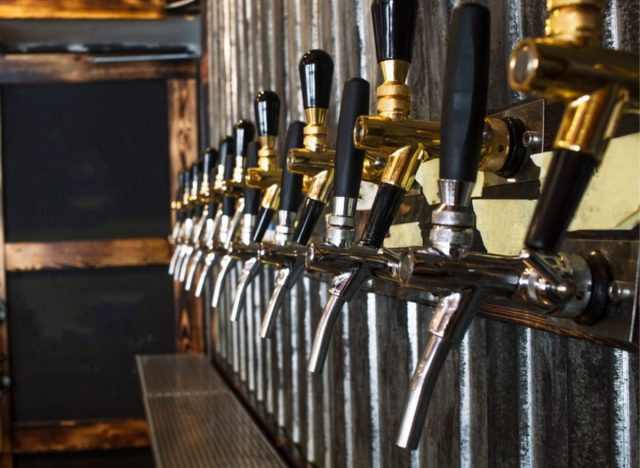

When you’re getting ready to tap a keg, you have to hook it up to the tap and let the magic happen. However, if the pipes of a draft machine are not managed properly, then draft dispensers can build up mold and unwanted bacteria that influence the taste and smell of any beer that comes out of it, according to Winning HomeBrew.
Forget about how well the beer was brewed or how fresh it may be from the brewing process. If the draft machine is not cleaned and sanitized, then your beer won’t be either. This should be cause for concern if you take a sip from your glass and it tastes somewhat sour or vinegary, then it’s probably been contaminated.
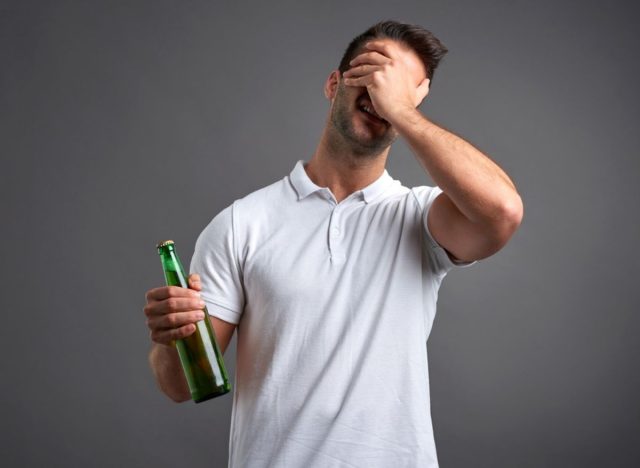

It’s possible that a lot of people scrutinizing the taste of a bottled beer compared to draft beer have once in their beer drinking years experienced a skunked beer. When a beer tastes skunked, it has a flavor that is not only unappealing, but it’s musty and even distastefully bitter at times.
VinePair reported that “the reason only bottled beer can be skunked is that UV rays can only reach the beer through glass bottles.” When beer is in a bottle, it’s more susceptible to light and heat that change its taste. This happens much more so in bottled beer than draft, because draft beer is concealed within a metal keg (with no access to light).
Also, as beer brands vary with their individual packaging, it’s important to note that the color of a beer bottle can make a difference to the taste quality of the beer as well. Brown beer bottles are about four times more protectant from UV, compared to green and clear bottles, which are the most susceptible to skunking, VinePair added.
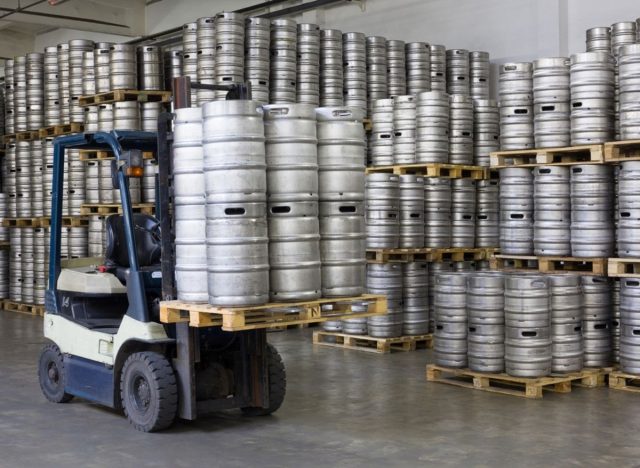

No matter how fast you drink your favorite brew, over time the taste develops and changes. But, out of the two choices, the quality of flavors in draft beer tends to last longer.
READ RELATED: Bobby Brown reveals Catholic priest tried to molest him at age 10
Draft beer can last months on end and still remain a good quality beer, according to Thompson Island Brewing. This is due to the fact that a keg is protected from light and rare changes in temperature, and the beer’s flavor can be contained for a longer time period.
On the other hand, bottled beer will end up going down in quality after time passes and most especially depending on storage methods, according to Thrillist. For best results out of any beer, making sure it’s in a cool, dry place and away from any food, is a great place to start.
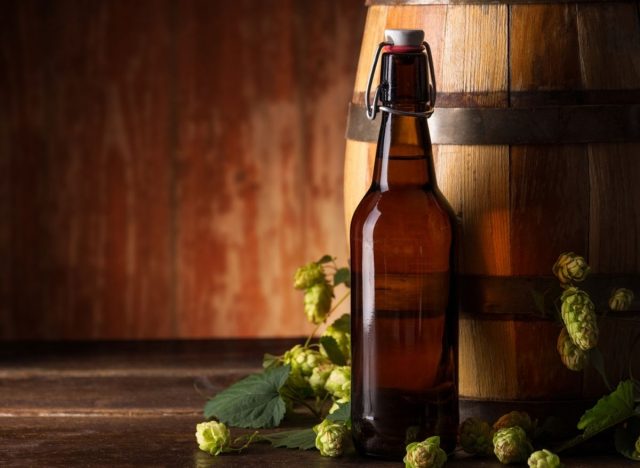

Even if your beer doesn’t taste skunked quite yet, over time it may not taste as good as you’d like because it’s lost the hops. Brewers brew hops into the beer to hold a specific aroma, flavor, and bitterness level to their liking, as well as to make their beer last longer.
Unfortunately, as Tasting Table explains, “light exposure in storage is definitely an issue with bottled beers…it affects the hops, often resulting in a more bitter beer than the brewer intended.” The character of a beer can fade due to it having less hops, so it may taste stale or over oxidized.
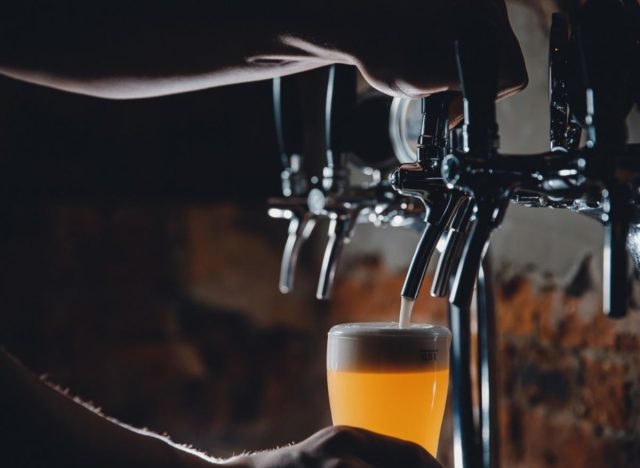

When it comes to the best quality beer, you want to go for whatever beer option that is the freshest. The taste of a beer that has been made or kept fresh will have the best overall flavor notes and hops, as the brewer intended you to drink it.
That being said, while draft beer can last longer, it’s usually going to be more fresh than bottled beer. Kegs are most likely to be kept at a consistent temperature and pressure, so the beer remains as close to its original state as possible. And even though the ingredients of draft beer are more prone to oxidation after a keg is tapped—too much oxygen degrades the alcohol levels and dries out the flavors in beer—draft beer sells fast and kegs are frequently being replaced with fresh ones once they kick. This is compared to a bottled beer that has sat on a shelf for who knows how long, at uncontrolled temperatures and access to an unfortunate amount of sunlight. No thank you, pull a glass from the tap.
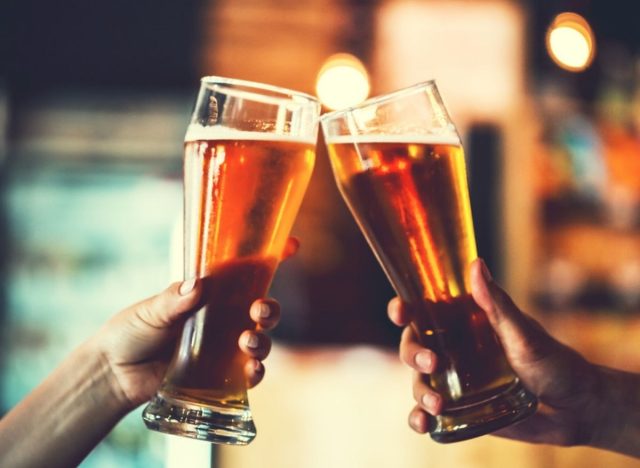

Bottled beer usually comes in a serving size of 12 ounces in your average bar. Draft beer, on the other hand, is usually served in 16 ounce glass. While quantity of taste doesn’t play a big part here, there can be a big difference in how the two options contribute to your drinking experience.
The more beer you’re served, the more ABV or “alcohol by volume” you’re going to consume. While some brands like Sierra Nevada lower their draft beer to 5 percent ABV from the 5.6 percent originally in the canned Original Pale Ale, you’re putting a higher quantity of alcohol into your body over time if you’re ordering multiple glasses of draft beer.
Renegade Brewing explains that because of the long journey draft beer has to take to get from the keg to your glass, a lot of carbon dioxides get lost. This makes the beer have less fizz and will feel a lot smoother with every sip. If your beer is more smooth, your drinking pace may escalate with ease, causing you to be able to drink more than you could of a carbonated bottled beer in a certain time period.


If you’ve ever felt an ache in your stomach after drinking a bottle of beer, that’s no coincidence. Max Bakker, educator for Anheuser-Busch (AB) Inbev and Master Cicerone, told Business Insider in a video on Twitter, that you should be drinking out of a glass no matter what. Beer has carbonation that needs to be released into the form of foam. If you drink beer out of a bottle the carbon dioxide (CO2) is not released out into the open and will sit uneasily in your stomach. “The foam is where we’re going to taste the sweetness of the malt and the bitterness of the hops. But really, it’s going to protect the integrity of that aroma that’s underneath the foam.”
Source:









